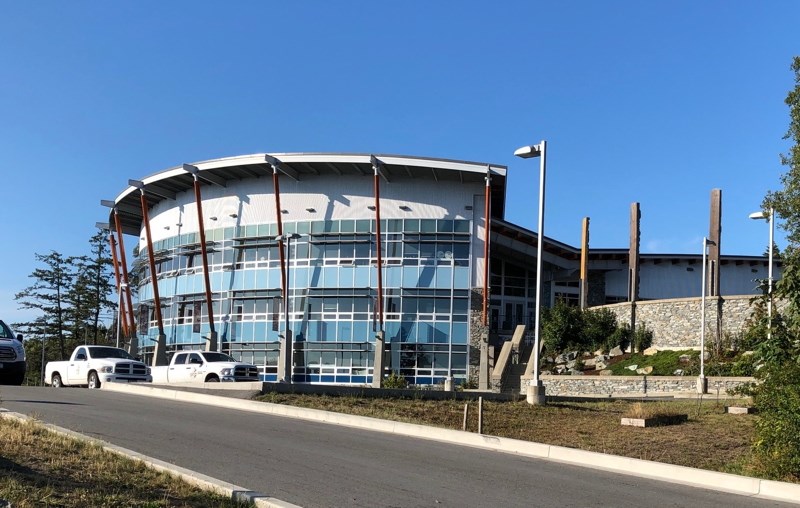A commentary by the director of economic development for the South Island Prosperity Partnership.
You may be working for an Indigenous-owned business soon — and that’s a good thing! With issues like climate change, divisive politics, and environmental degradation all over the world — as well as some cracks starting to show in Canada’s economy, it is time for a new era of progressive economic development. First Nations represent a substantial opportunity to move Canada forward.
The idea of Indigenous enterprises as job creators might seem new. In truth, Indigenous people have been enterprising and trading long before their encounters with colonizers. Their pursuit of business and trade are often driven by different goals — goals that are more holistic and align to spirituality, the natural world, and the sharing of wealth.
As Jeff Ward, founder of Indigenous technology company Animikii, pointed out in his TEDx talk (Google: Jeff Ward + TED, you won’t regret it), they are guided by the seven teachings: Love, Respect, Courage, Honesty, Wisdom, Humility and Truth.
Put into practice, these values can alter our business landscape for the better. Sustainability would be built into the business models and many more businesses would be partially owned by employees, which would help alleviate wealth inequality.
The true potential of the Indigenous economy is only beginning to emerge from the legacies of the Indian Act — the paternalistic laws of 1876 (which, despite amendments, remains largely intact). Among the many implications of this act is the stifling of the sovereign rights of Indigenous peoples to realize their economic potential.
The reserve system separated Indigenous people from economic opportunities and the act barred them from the same rules that other levels of governments use to create revenues (e.g. property and income taxes, international trade, etc.).
Now with the B.C. government’s adoption of the United Nations Declaration on the Rights of Indigenous Peoples (UNDRIP) and the negotiations complete on the United States-Mexico-Canada Agreement (USMCA), the West Coast Nations have the opportunity to flourish in new and exciting ways. Assembly of First Nations National Chief Perry Bellegarde called the new provisions in the USMCA “the most inclusive international trade agreement for Indigenous peoples to date” (as quoted in Maclean’s).
Carol Anne Hilton, founder of the Indigenomics Institute, is changing the conversation around this issue by championing the goal of a $100-billion Indigenous economy in Canada. It’s worth about $30 billion today, according to TD Economics.
Hilton asserts that using this aspirational language to describe the opportunity reframes the issue to one of optimism, rather than on the legacies of the Indian Act.
To reach this aspirational goal, policies and programs focused on increasing economic development capacity are needed.
Consider concepts that the most prosperous economies take for granted: international trade, attracting foreign direct investment, even the use of mortgages and other financial instruments to stimulate development.
To implement, these all take coordinated effort by highly trained personnel. But First Nations governments have not been afforded access to these tools. The Indian Act prevents many First Nations from obtaining value from their land. Furthermore, banks rarely finance projects without collateral.
However, efforts by several notable First Nations prove that this is changing.
Songhees Nation got out from the grips of the Indian Act by utilizing the Fiscal Management Act in order to create the revenues needed to, among other things, finance their incredible Wellness Centre.
Songhees now has 10 band-owned enterprises in operation and recently created an economic development corporation to streamline these businesses.
T’Sou-ke Nation took a seven-generation approach to their development plan, which established them as one of the first solar communities on the continent. Tsawwassen First Nation attracted an Amazon facility to their land and also built a major outlet mall.
Osoyoos Indian Band operates various enterprises, ranging from wineries to resorts, that employ more people on reserve than residents living there.
Rather than expensive consultants and law firms, partners like the National Indigenous Economic Development Board, and regional organizations, like the South Island Prosperity Partnership, can serve as facilitators along the path to increased internal capacity.
This capacity building will lead to increased use of complex economic development tools such as foreign direct investment attraction, international partnerships, and leveraging trade agreements to bring First Nations’ products to market. Imagine if Indigenous populations all over the world could elevate their sovereign nations to this global trading status.
Someday we will be celebrating progress in economic reconciliation — the true unleashing of the economic power, job creation potential, and progressive values of the Indigenous economy. And you might even be celebrating your new job at an Indigenous-led business.



